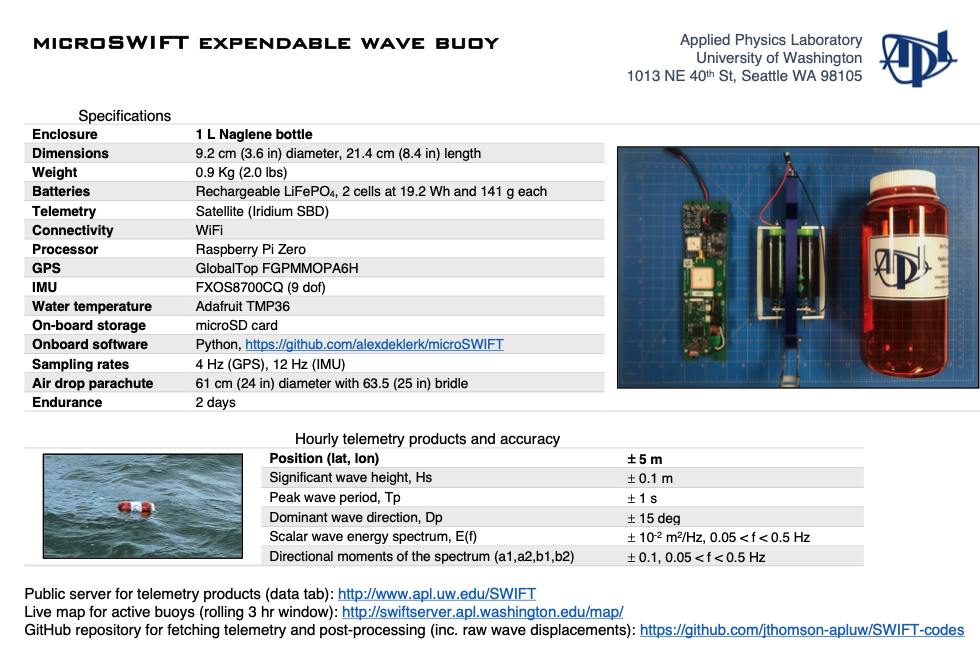
AOML/HRD supported 19 operationally tasked NOAA NHC/EMC P-3 Tail Doppler Radar and G-IV Synoptic Surveillance missions into Hurricane Lee from the time it became a category-5 hurricane to its extratropical transition and landfall in Nova Scotia. HRD collaborated with partners in AOML/Physical Oceanography Division, the Office of Naval Research, NOAA’s National Environmental Satellite, Data, and Information Service, NOAA’s Global Ocean Monitoring and Observing Program, and the University of Washington to collect supplemental atmospheric and oceanic data in Lee’s environment.

The NOAA43 mission on 8 September included the first-ever successful deployment of a University of Washington microSurface Wave Instrument Float with Tracking (microSWIFT) expendable buoy from a NOAA P-3 in a hurricane. The buoy measures ocean waves, surface wind velocity, turbulence, and ambient noise, and can give us new insight on what happens at the important interface between the ocean and the atmosphere. Other microSWIFT buoys were deployed on subsequent flights.

Missions collected important airborne Doppler radar information and transmitted it to NOAA/National Centers for Environmental Prediction for assimilation into the Hurricane Analysis and Forecasting System and the Hurricane Weather Research and Forecast model to improve forecasts of the track, structure, and intensity of Lee. In addition, they collected additional observations in the region of strongest winds within Lee’s eyewall to improve measurements of the surface wind speed in this region, tested a new sampling mode for the Tail Doppler Radar, collected valuable data on the boundary between the eye and eyewall, and sampled a region of rapidly changing and growing convection in the eyewall. On numerous occasions, scientists deployed a dropsonde, ocean temperature probe, and/or wave probe in close proximity of Saildrones that were in or near the core of Lee; collected airborne radar and dropsonde measurements between an inner and outer eyewall during an eyewall replacement cycle and win explosive convective activity in the decaying inner eyewall; and overflew a buoy for comparison with surface wind measurements from the aircraft.
These additional research observations will lead to improvements in our observing capabilities of tropical cyclones along with a better understanding of the atmospheric and oceanic processes that impact changes to the structure and intensity of tropical cyclones.
For more information, contact aoml.communications@noaa.gov.